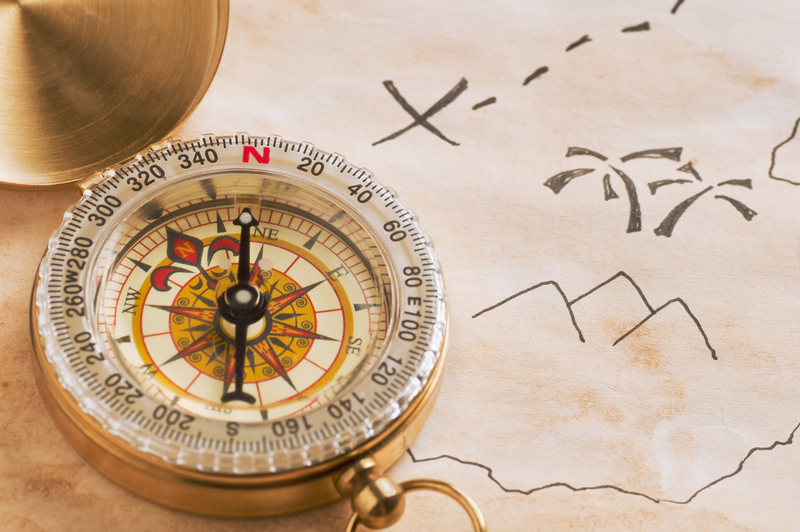Why a DIY Piano Move Could Hit a Sour Note
Posted on 09/06/2025
Why a DIY Piano Move Could Hit a Sour Note
Pianos are more than just musical instruments--they are treasures steeped in history, artistry, and often, emotional attachment. At some point, you may find yourself facing the daunting challenge of moving a piano, whether it's a graceful grand or a sturdy upright. While the appeal of saving money with a DIY piano move can be strong, the risks and hidden complications could quickly turn your project into a symphony of disaster. In this comprehensive guide, we'll tune into all the reasons why a DIY piano move could hit a sour note and how to make a move that won't strike the wrong chord.

Understanding the Complexity of Piano Moving
A piano move isn't just another item on your moving checklist. The unique structure and weight of a piano demand premium care and careful preparation, making this task especially challenging for untrained individuals. Let's take a closer look at what makes moving a piano so complicated:
The Sheer Weight and Size of Pianos
- Massive Weight: Even the smallest upright pianos can tip the scales at 300-400 pounds, while a concert grand may weigh over 1,200 pounds.
- Unwieldy Shapes: With bulky bodies, uneven weight distribution, and delicate legs, pianos are notoriously awkward to maneuver, especially through narrow doorways and tight corners.
- Multiple People Required: Safe piano moving typically demands at least 3-5 strong, capable helpers--moving a piano solo is nearly impossible and extremely risky.
The Fragile Inner Workings
- Delicate Mechanisms: Inside every piano are thousands of parts--strings, hammers, keys, and pedals--that can be thrown out of alignment by rough handling.
- Irreplaceable Finishes: High-gloss wood, inlays, and decorative details are susceptible to scratches, chips, and dents during even a short move.
- Tuning Sensitivity: A bumpy journey means your piano will almost certainly need professional tuning at your new location, but poor handling can require much costlier repairs.
The Hidden Dangers of a DIY Piano Move
Attempting a DIY piano move may seem like a way to cut corners and save some cash, but the potential perils are significant.
Personal Injury Risks
- Back Injuries: One wrong lift could lead to strained muscles, herniated discs, or lasting back problems.
- Crushed Fingers or Toes: Pianos do not forgive mistakes--fingers, hands, and feet are all at risk in tight spaces or if a piano tips over.
- General Accidents: Slips, trips, and falls are common when navigating stairs or icy pathways with heavy, cumbersome objects.
Property Damage Concerns
- Dinged Walls and Doorways: Pianos are notorious for leaving marks, gouges, and even structural damage if not properly supported and maneuvered.
- Floors at Risk: Rolling or dragging a piano can badly scratch or destroy hardwood, tile, and even carpets.
- Piano Damage: Drop a piano, or tip it the wrong way, and you might face costly repairs or even total loss of your valuable instrument.
Insurance Nightmares
If a friend is hurt or your neighbor's floor is ruined, your homeowner's insurance may not cover a DIY disaster--especially if you ignored best practices or used improper equipment.
The Essential Equipment for a Safe Piano Move
Professional piano movers invest heavily in specialized equipment to ensure safety. Are you sure you have all the tools and know-how to match? Here's what's typically involved:
- Heavy-Duty Piano Dollies: Grant stable movement across flat and uneven surfaces.
- Moving Straps and Harnesses: Crucial for control and weight distribution.
- Piano Boards (or Skid Boards): Required for grand and baby grand pianos; provide even support and secure strapping.
- Protective Padding and Blankets: Essential to avoid dings, dents, and surface scratches.
- Professional Ramps: Especially important for stairs, curbs, and loading onto trucks.
- Quality Hand Tools: For safe removal and reattachment of legs, pedals, and lids (if necessary).
Most DIY movers lack both the specialist tools and practical experience to use them effectively, dramatically increasing the odds of a mishap.
Why Hiring a Professional Piano Mover Makes Sense
When it comes to safeguarding your instrument--and your wellbeing--scheduling a professional piano move is a sound decision. Here's what the pros bring to the key-changing event:
Experience and Expertise
- Highly Trained Teams: Professionals have the know-how and coordination to safely dismantle, maneuver, and set up your piano--even in the trickiest spaces.
- Problem Solvers: Unexpected stairwells, narrow hallways, and crowded buildings are no match for an experienced piano mover.
- Instrument-Specific Knowledge: Each piano brand and model has unique requirements for safe transport.
Comprehensive Insurance Coverage
- Protection for Your Piano: If something does go wrong, your valuable instrument is protected against loss or damage.
- Liability for Personal Injury and Property: Movers carry insurance in case their team is hurt, or your home is damaged.
Time and Stress Savings
- No Risk of Injury: Letting the pros handle it keeps you (and your friends) safe from harm.
- Piano Arrives Ready to Play: Movers will position your piano for optimal acoustics and can often recommend tuners for finishing touches.
- Zero Emotional Toll: No anxiety, no risk, no stress--all music to your ears!
Common Myths About DIY Piano Moves--Debunked
Before you decide a do-it-yourself piano move is the way to go, learn the truth behind these popular misconceptions:
- Myth: Pianos are just like other heavy furniture.
Reality: Unlike sofas or cabinets, pianos have delicate internal mechanisms, require precise handling, and are incredibly unbalanced. - Myth: Four strong friends and some muscle are all you need.
Reality: Lifting capacity means little without training, strategy, and the right gear--enthusiasm is no match for 1,000 pounds of piano maneuvering around a tight stairwell. - Myth: You can always rent proper equipment.
Reality: Professional piano movers use industry-specific dollies, boards, and straps, and know how to employ them for your instrument's particular needs. - Myth: Insurance covers whatever happens.
Reality: Many personal policies specifically exclude damage from careless or amateur moves, leaving you responsible for costly repairs or medical bills.
The True Cost of a DIY Piano Move
You might believe rolling up your sleeves and moving your own piano will save you money, but let's do the math on what DIY could cost you:
- Equipment Rental Fees: Professional-grade dollies, boards, and truck ramps don't come cheap.
- Repair Expenses: Any mishap to your piano, home, or moving truck could spike the bill--especially if expert restoration is needed.
- Medical Bills: Injuries sustained during a risky move can be expensive, even long after the move is finished.
- Lost Value: A damaged or mistuned piano can lose significant resale or sentimental value.
- Stress and Time: The frustration, delays, and potential for chaos have their own hidden cost.
In many cases, hiring qualified piano movers ends up being much more affordable than rescuing a botched DIY attempt.

What to Look for in a Professional Piano Moving Company
Convinced that moving a piano by yourself could hit a sour note? Here's how to find the right pros for the job:
- Specialization: Choose a moving company that specifically advertises piano moving, not just general furniture hauling.
- Reputation: Look up reviews, testimonials, and industry certificates to ensure reliability and competence.
- Insurance and Licensing: Your movers should be fully licensed and insured for piano transport.
- Detailed Quotes: Transparent estimates and walk-throughs help avoid surprise fees and guarantee proper planning.
- Additional Services: Many movers also offer climate-controlled storage and recommendations for post-move piano tuning.
Final Thoughts: Keeping Your Move in Harmony
For musicians and music lovers, a piano is incomparable in its artistry, value, and ability to fill a room with emotion. That's precisely why a DIY piano move is such a perilous proposition. From personal injury risks and property damage to irreplaceable harm to your instrument's tone and appearance, the potential pitfalls are simply too great. Why chance it with a do-it-yourself approach that could hit a sour note when expert movers can strike the perfect chord?
When facing a piano move, take the option that keeps you, your home, and your cherished instrument in perfect harmony: Always trust the professionals.





